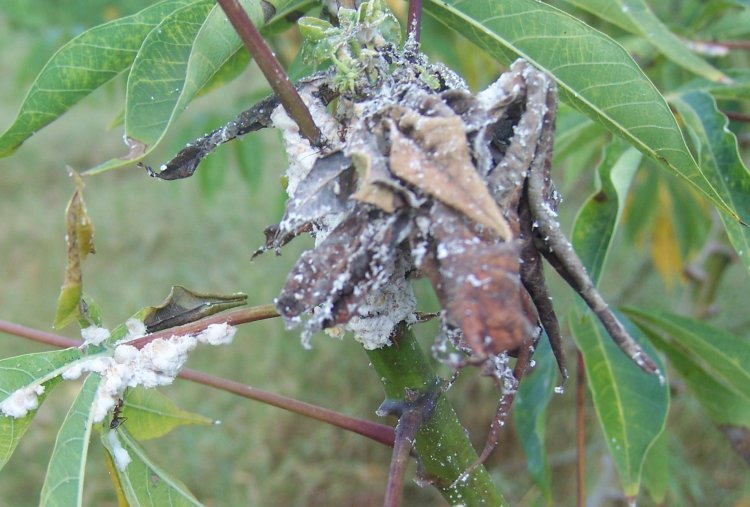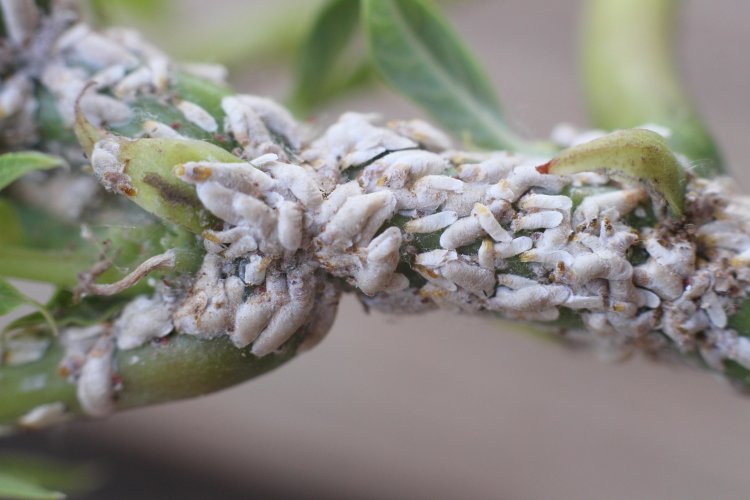Is Your Cassava Farm Under Attack? Master Pest Control with These Expert Strategies!
Discover expert pest control strategies for your cassava farm! Learn how to combat mealybugs, green mites, whiteflies, and more with IPM, biological controls, and resistant varieties.

Cassava, a staple crop for millions worldwide, is a hardy plant but not immune to pests that can devastate yields. Effective pest control is critical to ensuring a healthy cassava farm, maximizing productivity, and securing your livelihood. This blog dives deep into advanced pest control strategies tailored for cassava farming, combining organic, chemical, and integrated pest management (IPM) approaches. Whether you’re a smallholder or a commercial farmer, these expert tips will help you protect your cassava crops from common and emerging threats.

Cassava mealybug on cassava leaf.
Understanding the Pest Threats to Cassava Farms
Cassava faces a range of pests that attack its leaves, stems, and tubers, leading to reduced yields and poor-quality harvests. The most common pests include:
- Cassava Mealybug (Phenacoccus manihoti): Small, white, sap-sucking insects that weaken plants and stunt growth.
- Cassava Green Mite (Mononychellus tanajoa): Microscopic pests that cause leaf yellowing and defoliation.
- Whiteflies (Bemisia tabaci): Vectors of cassava mosaic disease (CMD), causing severe yield losses.
- Cassava Hornworm (Erinnyis ello): Caterpillars that defoliate cassava, reducing photosynthesis.
- Termites: Attack roots and stems, especially in dry seasons.
- Grasshoppers and Locusts: Chew through leaves and young shoots.
Each pest requires specific control measures, and early identification is key to preventing widespread damage.

Advanced Pest Control Strategies for Cassava Farms
1. Integrated Pest Management (IPM)IPM combines biological, cultural, physical, and chemical methods for sustainable pest control. It minimizes environmental harm while maximizing effectiveness.
- Monitoring and Scouting: Regularly inspect your cassava farm for signs of pest activity, such as yellowing leaves, sticky residues (from mealybugs or whiteflies), or chewed foliage. Use yellow sticky traps to monitor whitefly populations.
- Threshold-Based Action: Only apply controls when pest populations exceed economic threshold levels to avoid unnecessary costs and environmental impact.
- Decision Support Tools: Use mobile apps or consult local agricultural extension services for pest identification and management recommendations.
2. Biological Control
Biological control leverages natural enemies to suppress pest populations. This method is eco-friendly and sustainable.
- Introduce Natural Predators: For cassava mealybugs, release parasitic wasps like Anagyrus lopezi, which have been successful in Africa. Ladybugs and lacewings are effective against whiteflies.
- Encourage Beneficial Insects: Plant companion crops like marigolds or coriander to attract predatory insects. Maintain hedgerows or natural vegetation around your farm to provide habitats for these allies.
- Microbial Agents: Use entomopathogenic fungi like Beauveria bassiana to target mealybugs and whiteflies. These fungi infect and kill pests without harming crops.
3. Cultural Practices
Cultural practices modify the farm environment to make it less conducive to pests.
- Crop Rotation: Rotate cassava with non-host crops like legumes or cereals to disrupt pest life cycles.
- Intercropping: Plant cassava alongside pest-repellent crops like onions, garlic, or cowpeas. This reduces pest attraction and promotes biodiversity.
- Sanitation: Remove and destroy crop residues after harvest to eliminate pest breeding sites. Burn or compost affected plant material to prevent reinfestation.
- Healthy Planting Material: Use disease- and pest-free stem cuttings from certified sources to prevent introducing pests like whiteflies that carry CMD.
4. Chemical Control
While chemical pesticides should be a last resort, they can be effective when used judiciously.
- Targeted Pesticides: Use selective insecticides like imidacloprid for whiteflies or neem-based products for mealybugs. Avoid broad-spectrum pesticides that harm beneficial insects.
- Application Timing: Apply pesticides early in the morning or late in the evening when pests are active and pollinators are less likely to be affected.
- Resistance Management: Rotate pesticides with different modes of action to prevent pests from developing resistance.
5. Physical and Mechanical Controls
Physical barriers and manual interventions can reduce pest populations effectively.
- Sticky Traps: Install yellow or blue sticky traps to capture whiteflies and other flying pests.
- Handpicking: For larger pests like hornworms, manually remove and destroy them, especially in small farms.
- Mulching: Use organic mulch to suppress soil-dwelling pests like termites and improve soil health.
6. Resistant Varieties
Planting pest-resistant cassava varieties is a proactive way to minimize damage. Varieties like TMS 30572 and TME 419 show resistance to cassava mosaic disease and some pests. Consult local agricultural research institutes for recommendations suited to your region.
7. Emerging TechnologiesLeverage cutting-edge tools to stay ahead of pests:
- Drones for Monitoring: Use drones equipped with cameras to detect pest hotspots in large farms.
- AI-Based Pest Detection: Apps like PlantVillage Nuru use AI to identify pests from photos, enabling quick responses.
- Pheromone Traps: Deploy pheromone traps to disrupt the mating cycles of pests like the cassava hornworm.

Region-Specific Considerations
Pest challenges vary by region due to climate, soil, and farming practices. For example:
Africa: Cassava mealybugs and green mites are major threats. Biological control with parasitic wasps has been highly effective in countries like Nigeria and Ghana.
Latin America: The cassava hornworm is a significant issue. Intercropping with maize or beans can reduce infestations.
Asia: Whiteflies and CMD are prevalent. Use resistant varieties and sticky traps for management.
Consult local agricultural extension officers for tailored advice based on your location.
Preventive Measures for Long-Term Success
- Soil Health: Maintain fertile, well-drained soil to produce vigorous plants that can withstand pest attacks.
- Regular Training: Stay updated on pest control innovations through workshops or online courses offered by agricultural organizations.
- Community Collaboration: Work with neighboring farmers to implement area-wide pest management, reducing the risk of reinfestation.
Common Mistakes to Avoid
Over-Reliance on Chemicals: Excessive pesticide use can harm beneficial insects, pollute water sources, and lead to resistance.
Ignoring Early Signs: Delaying action until pests spread can result in significant yield losses.
Poor Record-Keeping: Track pest outbreaks and control measures to identify patterns and improve strategies over time.
Conclusion
Protecting your cassava farm from pests requires a proactive, multi-faceted approach. By combining integrated pest management, biological controls, cultural practices, and selective chemical use, you can safeguard your crops and boost yields sustainably. Stay vigilant, adopt new technologies, and collaborate with local experts to keep your farm thriving. Ready to take control? Start implementing these strategies today and watch your cassava farm flourish.
What pest control methods work for your cassava farm? Share below!
What's Your Reaction?





















